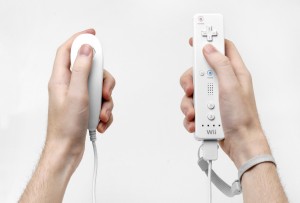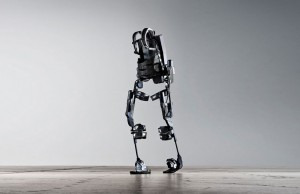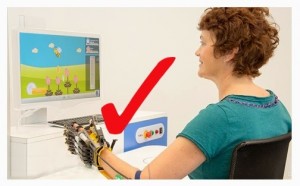Robots, video games, and designer bracelets—What comes to mind? It might be safe to say that physical therapy wasn’t your first thought. With our growing technological world, there are some physical therapy gadgets out there that are making rehabilitation more fun. they’re while shortening patients’ healing times and improving overall comfort. But don’t take my word for it, check out these five futuristic healers.
5 Physical Therapy Gadgets
Nintendo Wii
Wii Sports is changing the way rehab patients are recovering by providing an entertaining alternative to traditional therapy. Whether or not you are sitting or standing, the motion-sensitive gaming platform brings a competitive edge to therapy.
Between golfing, bowling, playing tennis or boxing, the lightweight controllers help motor movement and balance through repetitive motions.
Movements in Wii Sport games are similar to exercises already practiced in physical therapy, but the game aspect just makes everything 10x more enjoyable. In addition, the similar Wii Fit system helps patients with balance, improves core strength and promotes relaxation
Wii systems are especially beneficial with stroke recovery, therapeutic exercise, brain and spinal chord injuries, Parkinson’s disease, Alzheimer’s and Autism.
Ekso Bionic Suit
This robotic suit was created to help those who have been paralyzed. The suit is essentially a robotic exoskeleton that can be programed to mimic certain movemetns. With this advanced technology, those bound to a wheelchair can use their lower bodies to stretch their legs and fend off muscle deterioration.
The suit was designed to re-train people to walk again, so this gadget is not limited to those who are paralyzed, this robotic set of legs can also help those recovering from all variations of lower body weakness or injury.
iTherapy
It seems there is an app for everything these days, even physical therapy. One app in particular, PT Genie, was designed to assist patient’s exercises at home by providing diagrams, glossaries, videos and diagnostic tools.
PT Geanie is available for free with an iPad, and the bottom line is that this app is simple, user-friendly and cost-effective.
Some unique features are:
- Exercises can be printed wirelessly or emailed as attachments
- You can use pictures from your photo library to create and add your own exercise cards
- Get suggestions for Physical Therapy goal-writing
Fit Bit
Designed to fight arthritis of the knees, this tracking device worn on your wrist vibrates for each programmed amount of steps you take. The goal is reduce pain and minimize the risk of developing a more severe disability by remaining active.
Just 30 minutes of walking a day, or 3,000 steps, can improve joint health, enhance mental wellbeing and reduce risks of osteoporosis and diabetes.
Another neat feature is that Fit Bit aims to create a product for everyone, offering some stylish Tory Burch bracelets and pendants.
Rehabilitation Robots
Found only at a handful of locations across the U.S., these advanced robots are designed to aid in the treatment of traumatic brain injuries, strokes, cerebral palsy and other neurological impairments.
These robots are not meant to replace physical therapists, but rather assist therapists in tasks such as moving a patient who cannot walk or guiding patients through various movements.
Research has found that by actively engaging stroke patients in repetitive tasks, the brain is able to rewire neurological pathways to improve motor functions and relearn movement.
Introduced just six years ago, these robots are still being researched and improved, but you can’t deny this new technology is pretty exciting, especially for those recovering from neurological issues.
To say the least, physical therapy has come a long way since its documentation in the early 1800’s. But, what do you think? Would you try out some robotic therapy?




